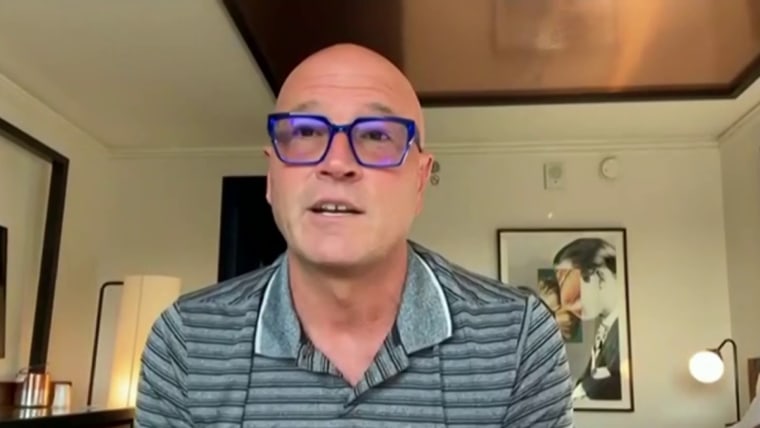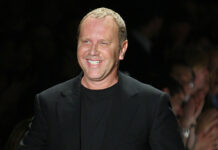Carl Nassib uttered it so nonchalantly — almost like a shrug. “I just want to take a quick moment to say that I’m gay,” the defensive lineman for the Las Vegas Raiders said in a video posted to his Instagram account Monday. And while someone coming out in 2021 might not feel like a big deal, with that simple statement, Nassib became the first openly gay active player in NFL history.
With that simple statement, Nassib became the first openly gay active player in NFL history.
Queerness is the most socially acceptable it’s ever been, with American support for marriage equality and protections for the LGBTQ+ community at an all-time high. Gen Z is the queerest generation yet, and each time a public figure acknowledges being part of the LGBTQ+ community, the stigma lessens.
One place where that has not been true, however, is in the world of men’s sports. Though there are many openly queer women in professional sports, the same cannot be said for men.
The homophobia of men’s sports culture has been well documented. A 2018 study from the Human Rights Campaign found that 84 percent of Americans had witnessed anti-LGBTQ+ attitudes in sports, and the U.S. ranks the worst when it comes to homophobia in athletics. Currently, there is only one openly gay player on a professional men’s team in the “big five” American sports: Soccer player Collin Martin of the USL Championship League (Martin came out in 2018 as a member of Major League Soccer’s Minnesota United).
The NFL has existed for 101 years, and in that time, there has never been a player on an active NFL roster who has publicly acknowledged his gayness. This, of course, doesn’t mean there haven’t been closeted gay players. In 2014, Michael Sam became the first openly gay player to be drafted by an NFL team, when the St. Louis Rams took him in the seventh round, but he never played in a game. (In 2015, he became the first openly gay player in the Canadian Football League when he spent a season with the Montreal Alouettes.) In 2019, NFL free agent Ryan Russell came out as bisexual but has not been picked up by any team since doing so. Several players have also come out after retirement, like Wade Davis III, who attended training camp with the Tennessee Titans and Dallas Cowboys (and who went on to become the NFL’s first LGBTQ+ inclusion consultant) and former New England Patriot Ryan O’Callaghan.
And football, perhaps more than any other U.S. sport, embodies American masculinity. This is where misogyny comes into play, manifesting in a culture of homophobia. To be a gay man is to face being stereotyped as weak or effeminate — the opposite of what a football player, or an athlete, is “supposed” to be. This culture is crushing to the queer men who are trying to navigate it, often making them feel like they need to hide their true selves in order to play the sport they love. ““In college, football was a great cover for being gay,” O’Callaghan told Outsports in 2017. “And then I saw the NFL mainly as a way to keep hiding my sexuality and stay alive.” Davis remembers spending $1,500 at a strip club in an attempt to conceal the fact that he was gay from his teammates.
And despite society’s evolving attitudes, the sports world seems to be moving far slower to modernize and destigmatize. Research still shows that the majority of LGBTQ+ teen athletes are not out to their coaches or teammates, and that translates to similar problems at the collegiate and professional levels. “I think it’s safe to say there’s at least one on every team who is either gay or bisexual,” O’Callaghan speculated in 2019. “A lot of guys still see it as potentially having a negative impact on their career.”
Football, perhaps more than any other U.S. sport, embodies American masculinity. This is where misogyny comes into play, manifesting in a culture of homophobia.
Hiding this truth can have devastating consequences. Nassib admits that “sadly,” he “agonized over this moment for the last 15 years.” For O’Callaghan, hiding his sexual orientation from his teammates took a huge toll, as he struggled with addiction, depression and suicidal ideation.
Nassib’s video was followed by supportive posts from both the NFL’s and the Raiders’ official accounts, which hopefully means that men’s sports is at a turning point. On Tuesday, the NFL matched Nassib’s $100,000 donation to The Trevor Project, an organization dedicated to suicide prevention and mental health support for LGBTQ+ youth.
Though leagues have celebrated Pride Month for the last several years and many, including the NFL, have had commissions dedicated to LGBTQ+ inclusion, the fact that no players have felt comfortable coming out shows how deeply rooted these cultural issues are. Inclusion needs to be more than symbolic; rainbow patches and hosting Pride Nights will not produce the kind of meaningful shift in locker room culture necessary for queer players to feel like they can safely be open about who they are.
But players like Nassib taking the first step might; now it’s up to the NFL and the Raiders to provide the support he deserves. Nassib made it clear that he doesn’t want his sexual identity to be a big deal — even though it is, in fact, a huge milestone. He didn’t come out for the fanfare, or to earn the label of “the first.” He came out so that maybe the kids who come after him don’t have to agonize in the same way he — and so many others — have. Here’s hoping we can get to a place where a professional male athlete coming out really is worthy of just a shrug.









